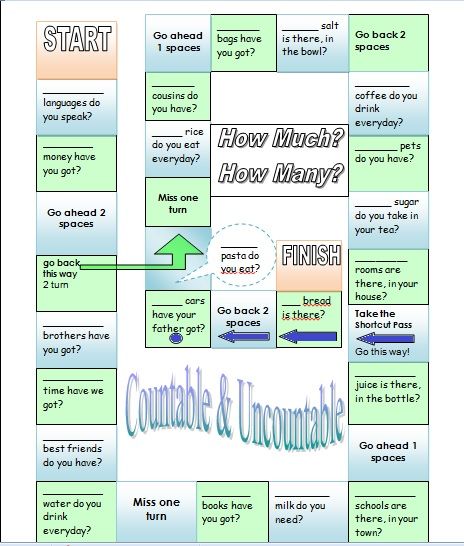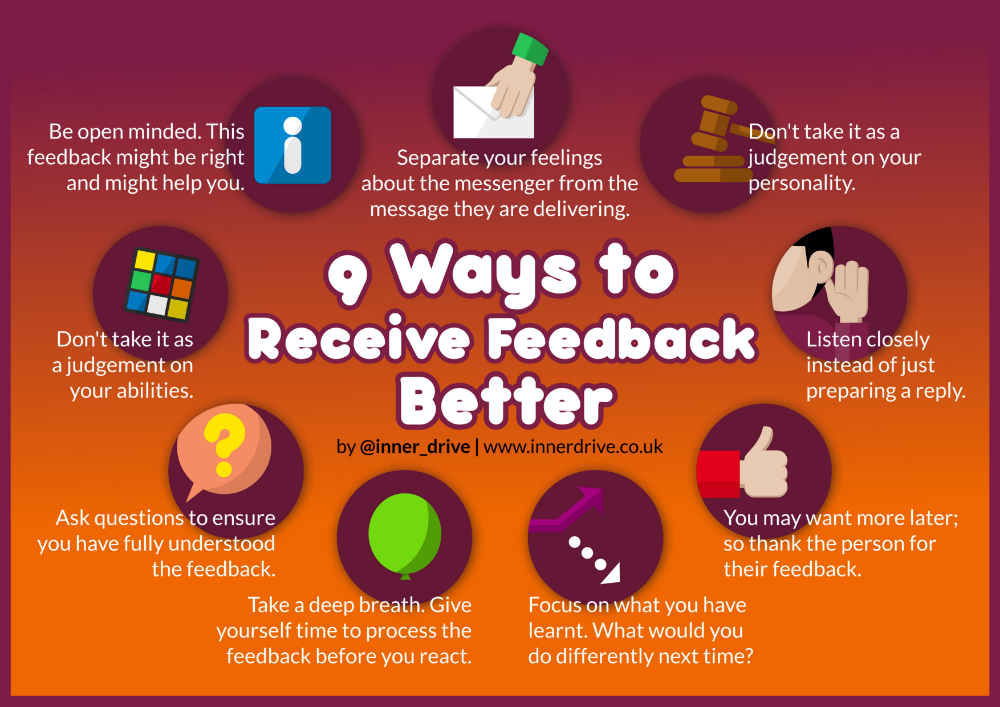How to support a child with autism
How to help your autistic child with day-to-day life
How to help your child communicate
Do
-
use your child's name so they know you're speaking to them
-
keep language simple and clear
-
speak slowly and clearly
-
use simple gestures, eye contact and pictures or symbols to support what you're saying
-
allow extra time for your child to understand what you have said
-
ask your autism assessment team if you can get help from a speech and language therapist (SLT)
-
try ways to help them communicate, such as Signalong, Makaton or PECS
-
read tips from the National Autistic Society on communicating with your child
Don’t
-
try not to ask your child lots of questions
-
try not to have a conversation in a noisy or crowded place
-
try not to say things that could have more than 1 meaning, such as "pull your socks up" or "break a leg"
Dealing with anxiety
Anxiety affects a lot of autistic children and adults. It can be caused by not being able to make sense of things going on around them, and feeling misunderstood or unaccepted by people who are not autistic.
Try to find out why your child's feeling anxious.
It might be because of:
- a change in routine – it might help to prepare your child for any change, such as a change of class at school
- difficulty identifying, understanding or managing their feelings
- a noisy or brightly coloured place – it might help to take your child to a calmer place, such as another room
If your child is often anxious, ask your GP about therapy, such as cognitive behavioural therapy (CBT), which may help.
Search The National Autistic Society's directory for counsellors experienced in helping people with autism and read more about managing anxiety.
Helping with your child's behaviour
Some autistic children have behaviours such as:
- stimming – a kind of repetitive behaviour (such as flapping their hands or flicking their fingers)
- meltdowns – a complete loss of control caused by being totally overwhelmed
If your child has these behaviours, read our advice about how to help your child's behaviour.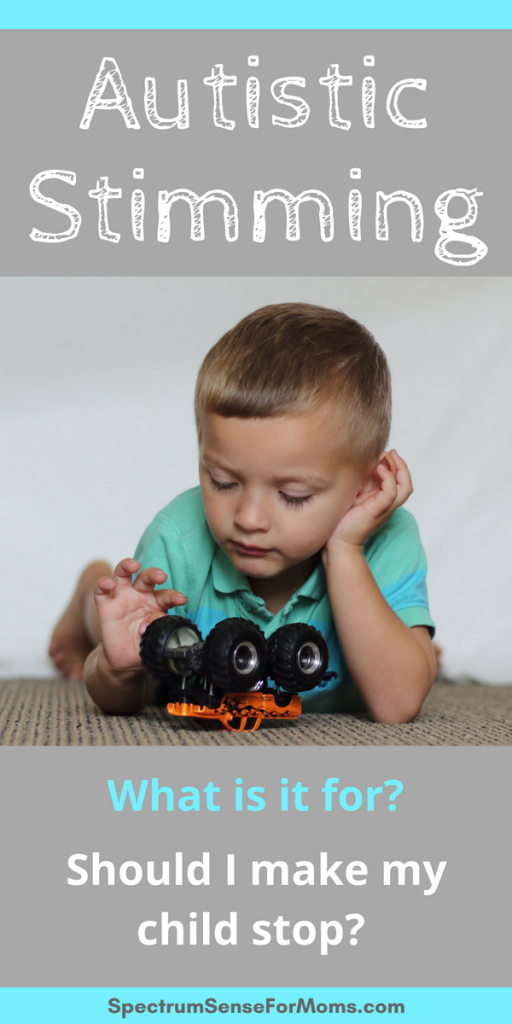
Eating difficulties
Many children are "fussy eaters".
Autistic children may:
- only want to eat foods of a certain colour or texture
- not eat enough or eat too much
- eat things which are not food (called pica)
- have problems with coughing or choking while eating
- be constipated, so they feel full even when they have not eaten much food
It may help to keep a food diary, including what, where and when your child eats. This can help you notice any common issues your child has.
Speak to a GP or your autism team about any problems your child's having with eating.
The National Autistic Society has more about how to help with eating problems
Problems sleeping
Many autistic children find it hard to get to sleep, or wake up several times during the night.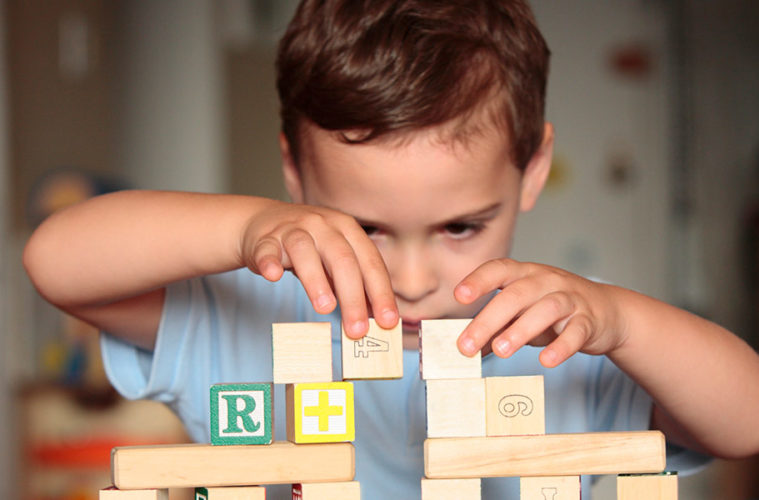
This may be because of:
- anxiety
- sensitivity to the light from smartphones or tablets
- problems with the sleep hormone melatonin
- issues such as hyperactivity or a health condition that affects sleep
You can help your child by:
- keeping a sleep diary of how your child sleeps to help you notice any common issues
- following the same bedtime routine
- making sure their bedroom is dark and quiet
- letting them wear ear plugs if it helps
- talking to a GP about how to manage health conditions that make sleep difficult, such as a food sensitivity or breathing problem
If these tips do not help, talk to your autism team about creating a sleep plan to help your child's sleep behaviour.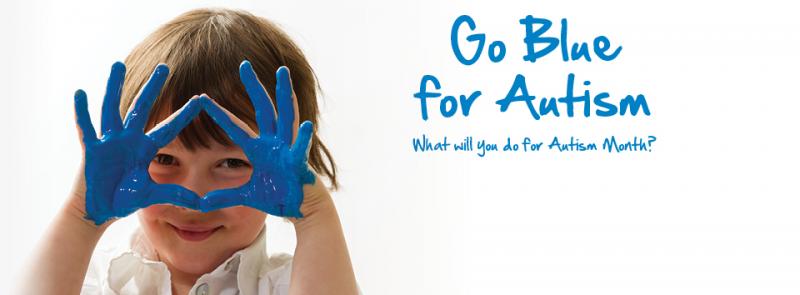
If your child's sleep does not get better, a GP might refer you to a paediatrician or child psychiatrist with experience of autism who can prescribe a medicine called melatonin to help your child sleep.
Staying healthy
It's important that your child has regular check-ups with the:
- dentist
- optician
- doctors treating any other conditions your child has
Children over 14 who also have a learning disability are entitled to an annual health check.
Do not be afraid to let staff know what they can do to make it easier to go for check-ups.
Find out more ways to stay healthy from the National Autistic Society
Friendships and socialising
Some autistic children find it hard to make friends.
There are some things you can do to help:
Do
-
get ideas from other parents on autism forums and local support groups
-
ask your child's school if they can help
-
ask your autism team how to help your child communicate and socialise
-
search the National Autism Society directory for local social groups that are autism-friendly
-
read more advice about making friends from the National Autistic Society
Helping Your Child with Autism Thrive
autism
There are many things you can do to help a child with Autism Spectrum Disorder (ASD) overcome their challenges.
 These parenting tips, treatments, and services can help.
These parenting tips, treatments, and services can help.A parent's guide to autism treatment and support
If you've recently learned that your child has or might have autism spectrum disorder, you're probably wondering and worrying about what comes next. No parent is ever prepared to hear that a child is anything other than happy and healthy, and an ASD diagnosis can be particularly frightening. You may be unsure about how to best help your child, or confused by conflicting treatment advice. Or you may have been told that ASD is an incurable, lifelong condition, leaving you concerned that nothing you do will make a difference.
While it is true that ASD is not something a person simply “grows out of,” there are many treatments that can help children acquire new skills and overcome a wide variety of developmental challenges. From free government services to in-home behavioral therapy and school-based programs, assistance is available to meet your child's special needs and help them learn, grow, and thrive in life.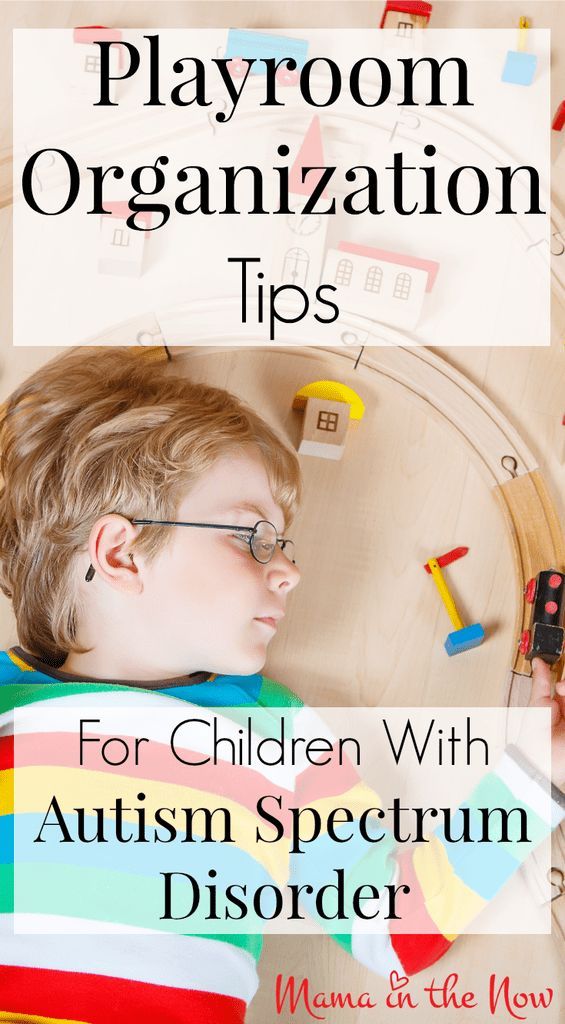
When you’re looking after an autistic child, it’s also important to take care of yourself. Being emotionally strong allows you to be the best parent you can be to your child in need. These parenting tips can help by making life with an autistic child easier.
Don't wait for a diagnosis
As the parent of a child with ASD or related developmental delays, the best thing you can do is to start treatment right away. Seek help as soon as you suspect something's wrong. Don't wait to see if your child will catch up later or outgrow the problem. Don't even wait for an official diagnosis. The earlier children with autism spectrum disorder get help, the greater their chance of treatment success. Early intervention is the most effective way to speed up your child's development and reduce the symptoms of autism over the lifespan.
[Read: Does My Child Have Autism?]
When your child has autism
Learn about autism. The more you know about autism spectrum disorder, the better equipped you'll be to make informed decisions for your child.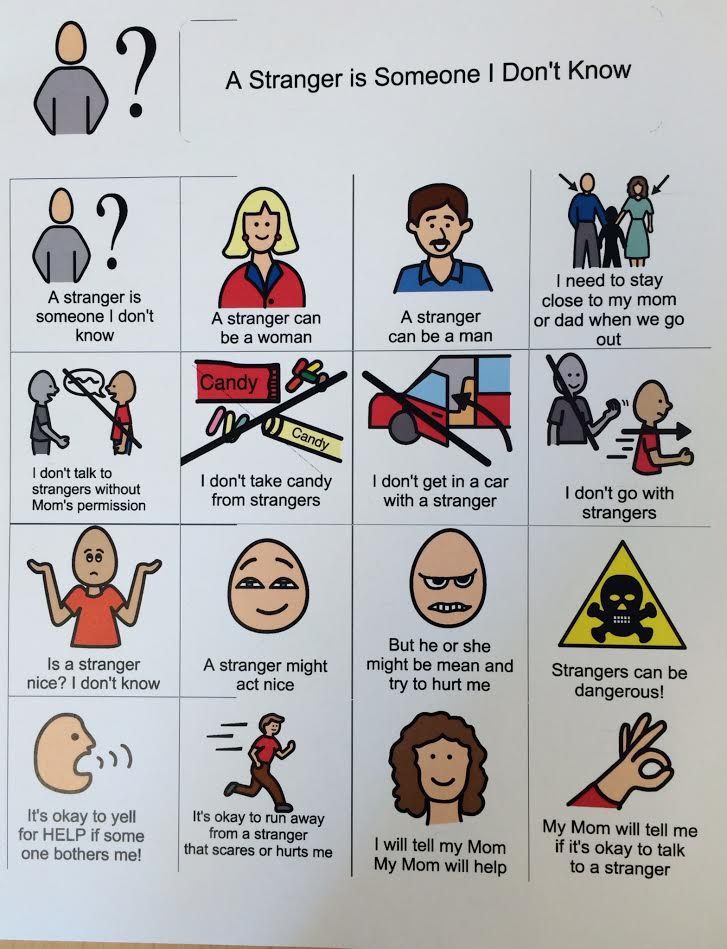 Educate yourself about the treatment options, ask questions, and participate in all treatment decisions.
Educate yourself about the treatment options, ask questions, and participate in all treatment decisions.
Become an expert on your child. Figure out what triggers your kid's challenging or disruptive behaviors and what elicits a positive response. What does your child find stressful or frightening? Calming? Uncomfortable? Enjoyable? If you understand what affects your child, you'll be better at troubleshooting problems and preventing or modifying situations that cause difficulties.
Accept your child, quirks and all. Rather than focusing on how your autistic child is different from other children and what he or she is “missing,” practice acceptance. Enjoy your kid's special quirks, celebrate small successes, and stop comparing your child to others. Feeling unconditionally loved and accepted will help your child more than anything else.
Don't give up. It's impossible to predict the course of autism spectrum disorder. Don't jump to conclusions about what life is going to be like for your child.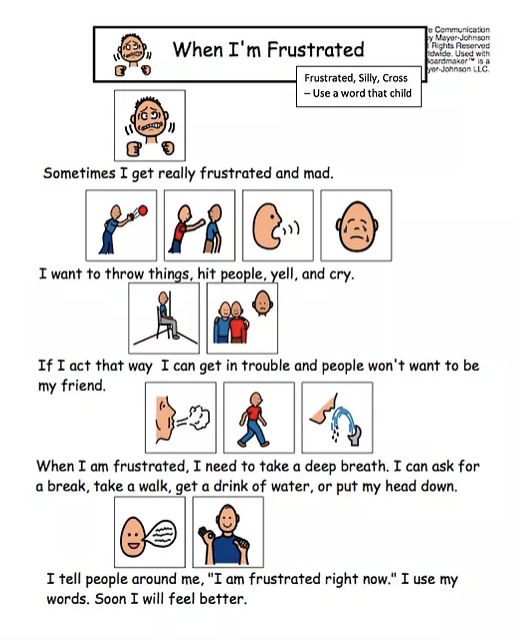 Like everyone else, people with autism have an entire lifetime to grow and develop their abilities.
Like everyone else, people with autism have an entire lifetime to grow and develop their abilities.
Helping your child with autism thrive tip 1: Provide structure and safety
Learning all you can about autism and getting involved in treatment will go a long way toward helping your child. Additionally, the following tips will make daily home life easier for both you and your child with ASD:
Be consistent. Children with ASD have a hard time applying what they've learned in one setting (such as the therapist's office or school) to others, including the home. For example, your child may use sign language at school to communicate, but never think to do so at home. Creating consistency in your child's environment is the best way to reinforce learning. Find out what your child's therapists are doing and continue their techniques at home. Explore the possibility of having therapy take place in more than one place in order to encourage your child to transfer what he or she has learned from one environment to another.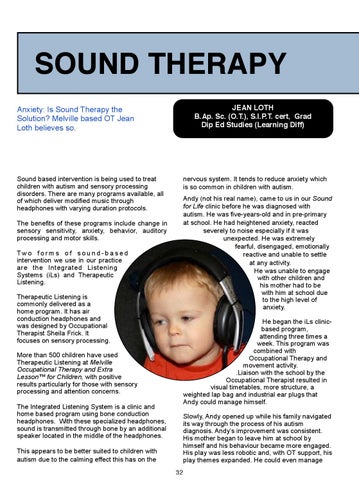 It's also important to be consistent in the way you interact with your child and deal with challenging behaviors.
It's also important to be consistent in the way you interact with your child and deal with challenging behaviors.
Stick to a schedule. Autistic children tend to do best when they have a highly-structured schedule or routine. Again, this goes back to the consistency they both need and crave. Set up a schedule for your child, with regular times for meals, therapy, school, and bedtime. Try to keep disruptions to this routine to a minimum. If there is an unavoidable schedule change, prepare your child for it in advance.
Reward good behavior. Positive reinforcement can go a long way with children with ASD, so make an effort to “catch them doing something good.” Praise them when they act appropriately or learn a new skill, being very specific about what behavior they're being praised for. Also look for other ways to reward them for good behavior, such as giving them a sticker or letting them play with a favorite toy.
Create a home safety zone.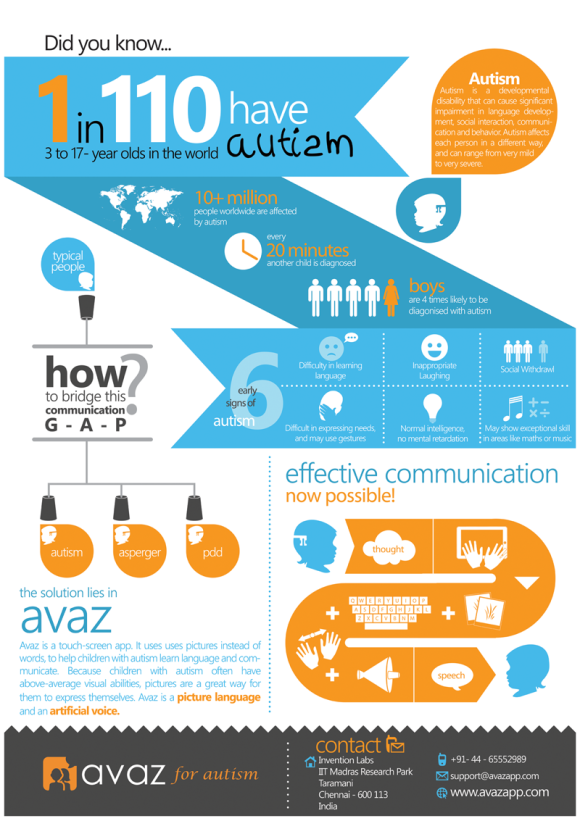 Carve out a private space in your home where your child can relax, feel secure, and be safe. This will involve organizing and setting boundaries in ways your child can understand. Visual cues can be helpful (colored tape marking areas that are off limits, labeling items in the house with pictures). You may also need to safety proof the house, particularly if your child is prone to tantrums or other self-injurious behaviors.
Carve out a private space in your home where your child can relax, feel secure, and be safe. This will involve organizing and setting boundaries in ways your child can understand. Visual cues can be helpful (colored tape marking areas that are off limits, labeling items in the house with pictures). You may also need to safety proof the house, particularly if your child is prone to tantrums or other self-injurious behaviors.
Tip 2: Find nonverbal ways to connect
Connecting with an autistic child can be challenging, but you don't need to talk—or even touch—in order to communicate and bond. You communicate by the way you look at your child, by the tone of your voice, your body language – and possibly the way you touch your child. Your child is also communicating with you, even if he or she never speaks. You just need to learn the language.
Look for nonverbal cues. If you are observant and aware, you can learn to pick up on the nonverbal cues that autistic children use to communicate.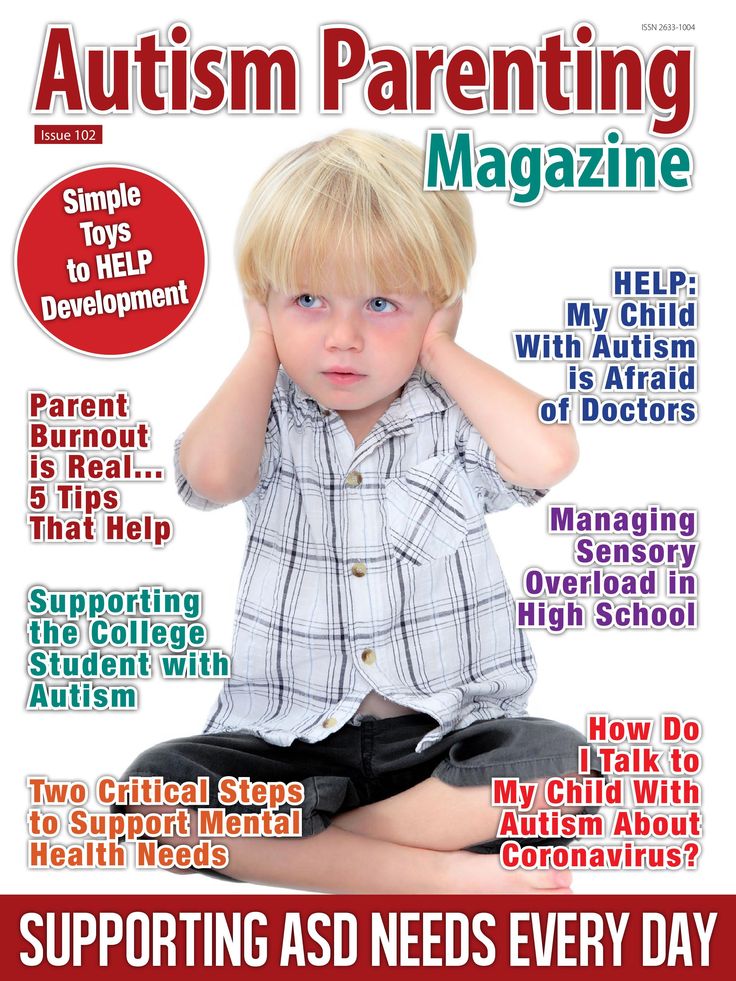 Pay attention to the kinds of sounds they make, their facial expressions, and the gestures they use when they're tired, hungry, or want something.
Pay attention to the kinds of sounds they make, their facial expressions, and the gestures they use when they're tired, hungry, or want something.
Figure out the motivation behind the tantrum. It's only natural to feel upset when you are misunderstood or ignored, and it's no different for children with ASD. When children with ASD act out, it's often because you're not picking up on their nonverbal cues. Throwing a tantrum is their way of communicating their frustration and getting your attention.
[Read: Autism Behavior Problems]
Make time for fun. A child coping with ASD is still a child. For both autistic children and their parents, there needs to be more to life than therapy. Schedule playtime when your child is most alert and awake. Figure out ways to have fun together by thinking about the things that make your child smile, laugh, and come out of her/his shell. Your child is likely to enjoy these activities most if they don't seem therapeutic or educational.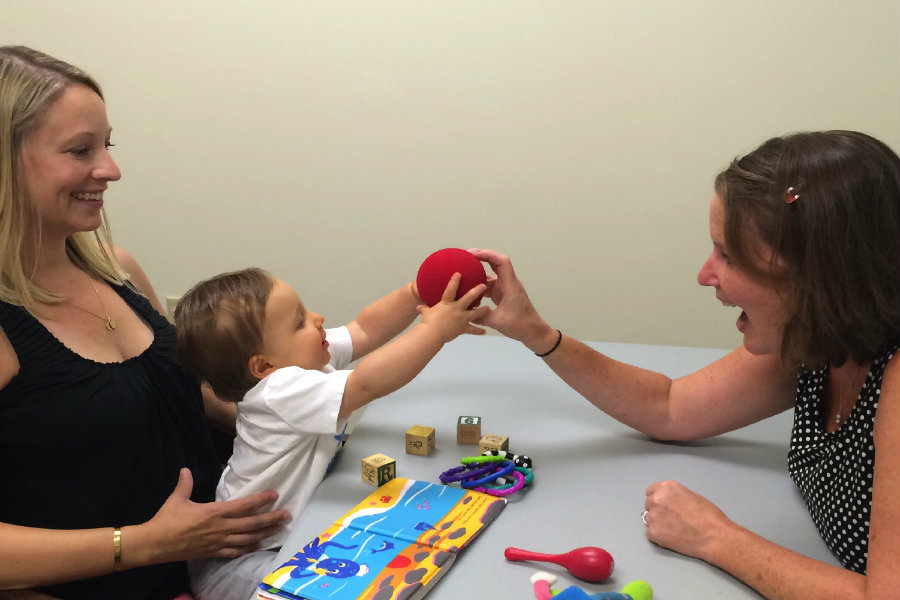 There are tremendous benefits that result from your enjoyment of your child's company and from your child's enjoyment of spending unpressured time with you. Play is an essential part of learning for all children and shouldn't feel like work.
There are tremendous benefits that result from your enjoyment of your child's company and from your child's enjoyment of spending unpressured time with you. Play is an essential part of learning for all children and shouldn't feel like work.
Pay attention to your child's sensory sensitivities. Many children with ASD are hypersensitive to light, sound, touch, taste, and smell. Some children with autism are “under-sensitive” to sensory stimuli. Figure out what sights, sounds, smells, movements, and tactile sensations trigger your kid's “bad” or disruptive behaviors and what elicits a positive response. What does your child find stressful? Calming? Uncomfortable? Enjoyable? If you understand what affects your child, you'll be better at troubleshooting problems, preventing situations that cause difficulties, and creating successful experiences.
Tip 3: Create a personalized autism treatment plan
With so many different treatments available, it can be tough to figure out which approach is right for your child.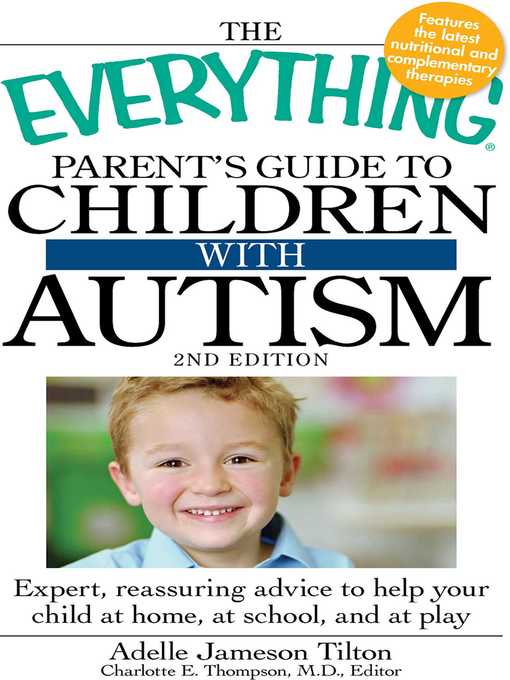 Making things more complicated, you may hear different or even conflicting recommendations from parents, teachers, and doctors.
Making things more complicated, you may hear different or even conflicting recommendations from parents, teachers, and doctors.
When putting together a treatment plan for your child, keep in mind that there is no single treatment that works for everyone. Each person on the autism spectrum is unique, with different strengths and weaknesses.
Your child's treatment should be tailored according to their individual needs. You know your child best, so it's up to you to make sure those needs are being met. You can do that by asking yourself the following questions:
What are my child's strengths – and their weaknesses?
What behaviors are causing the most problems? What important skills is my child lacking?
How does my child learn best – through seeing, listening, or doing?
What does my child enjoy – and how can those activities be used in treatment and to bolster learning?
Finally, keep in mind that no matter what treatment plan is chosen, your involvement is vital to success.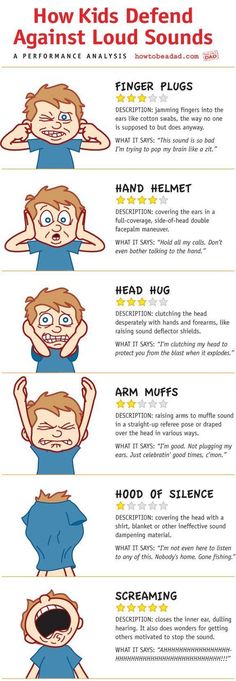 You can help your child get the most out of treatment by working hand-in-hand with the treatment team and following through with the therapy at home. (This is why your well-being is essential!)
You can help your child get the most out of treatment by working hand-in-hand with the treatment team and following through with the therapy at home. (This is why your well-being is essential!)
A good treatment plan will:
- Build on your child's interests.
- Offer a predictable schedule.
- Teach tasks as a series of simple steps.
- Actively engage your child's attention in highly structured activities.
- Provide regular reinforcement of behavior.
- Involve the parents.
Choosing autism treatments
There are many different options and approaches to ASD treatment, including behavior therapy, speech-language therapy, physical therapy, occupational therapy, and nutritional therapy.
While you don’t have to limit your child to just one treatment at a time, it’s unlikely you’ll be able to address everything at once. Instead, start by focusing on your child’s most severe symptoms and pressing needs.
[Read: Autism Treatments, Therapies, and Interventions]
Tip 4: Find help and support
Caring for a child with autism can demand a lot of energy and time.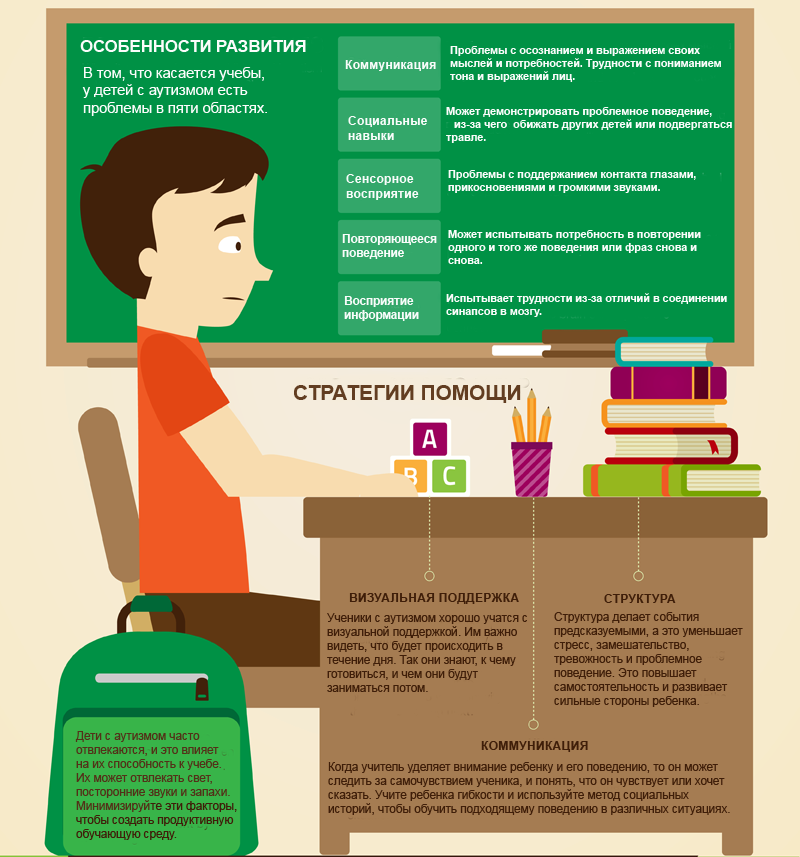 There may be days when you feel overwhelmed, stressed, or discouraged. Parenting isn't ever easy, and raising a child with special needs is even more challenging. In order to be the best parent you can be, it's essential that you take care of yourself.
There may be days when you feel overwhelmed, stressed, or discouraged. Parenting isn't ever easy, and raising a child with special needs is even more challenging. In order to be the best parent you can be, it's essential that you take care of yourself.
Don't try to do everything on your own. You don't have to! There are many places that families of children with ASD can turn to for advice, a helping hand, advocacy, and support:
ADS support groups – Joining an ASD support group is a great way to meet other families dealing with the same challenges you are. Parents can share information, get advice, and lean on each other for emotional support. Just being around others in the same boat and sharing their experience can go a long way toward reducing the isolation many parents feel after receiving a child's diagnosis.
Respite care – Every parent needs a break now and again. And for parents coping with the added stress of ASD, this is especially true.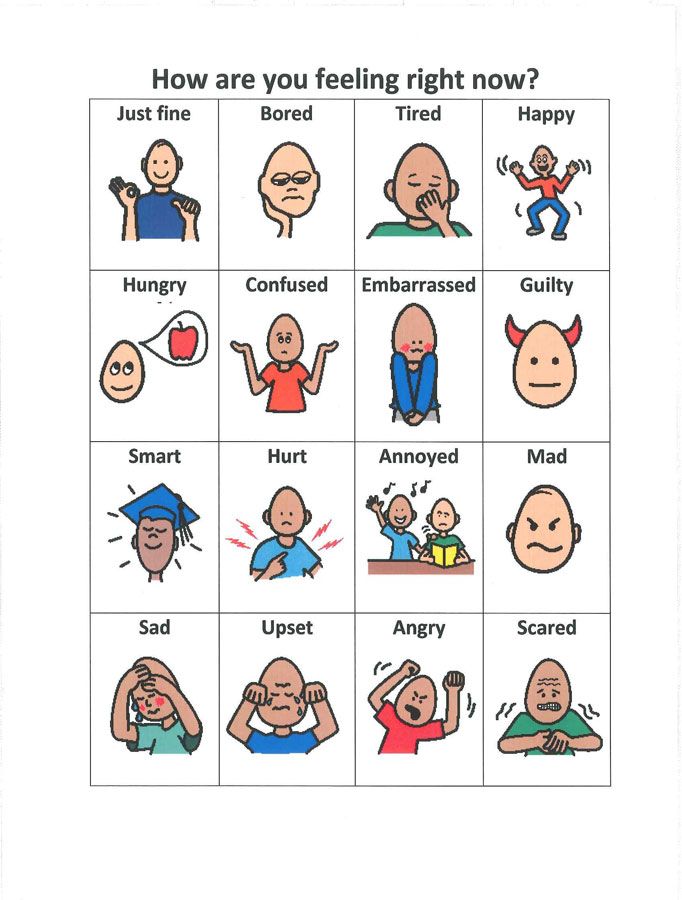 In respite care, another caregiver takes over temporarily, giving you a break for a few hours, days, or even weeks.
In respite care, another caregiver takes over temporarily, giving you a break for a few hours, days, or even weeks.
[Read: Respite Care]
Individual, marital, or family counseling – If stress, anxiety, or depression is getting to you, you may want to see a therapist of your own. Therapy is a safe place where you can talk honestly about everything you're feeling—the good, the bad, and the ugly. Marriage or family therapy can also help you work out problems that the challenges of life with an autistic child are causing in your spousal relationship or with other family members.
With over 25,000 licensed counselors, BetterHelp has a therapist that fits your needs. It's easy, affordable, and convenient.
GET 20% OFF
Online-Therapy.com is a complete toolbox of support, when you need it, on your schedule. It only takes a few minutes to sign up.
GET 20% OFF
Teen Counseling is an online therapy service for teens and young adults. Connect with your counselor by video, phone, or chat.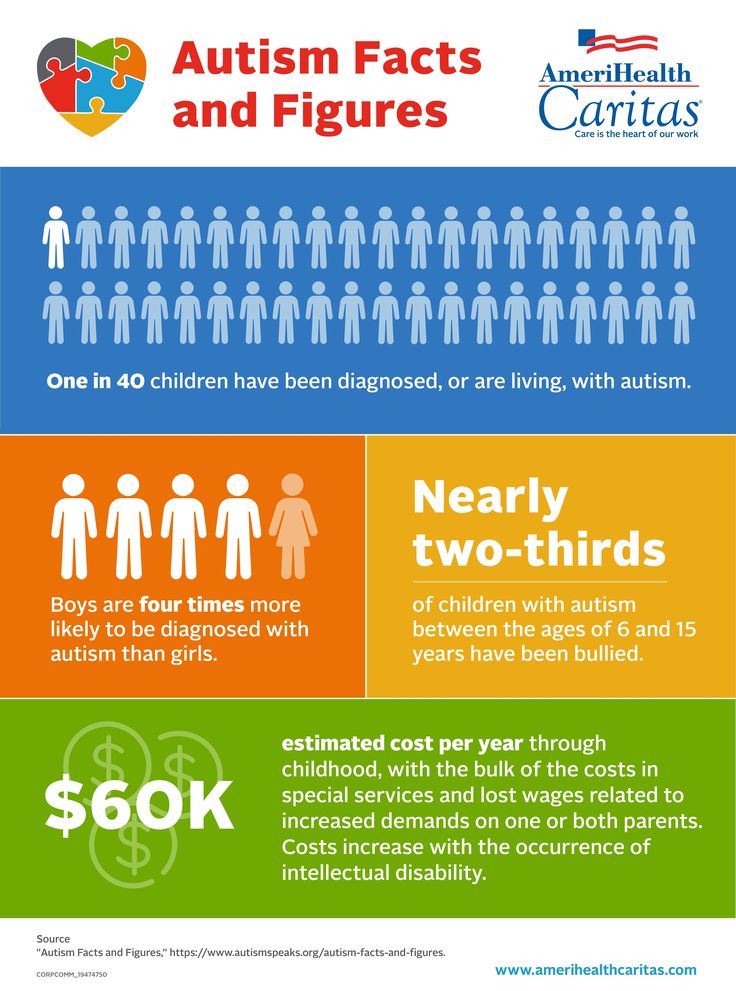
GET 20% OFF
Free U.S. government services for children with autism
Under the U.S. federal law known as the Individuals with Disabilities Education Act (IDEA), children with disabilities—including those with ASD—are eligible for a range of free or low-cost services. Under this provision, children in need and their families may receive medical evaluations, psychological services, speech therapy, physical therapy, parent counseling and training, assisted technology devices, and other specialized services.
Children under the age of 10 do not need an autism diagnosis to receive free services under IDEA. If they are experiencing a developmental delay (including delays in communication or social development), they are automatically eligible for early intervention and special education services.
Early intervention services (birth through age two)
Infants and toddlers through the age of two receive assistance through the Early Intervention program. In order to qualify, your child must first undergo a free evaluation.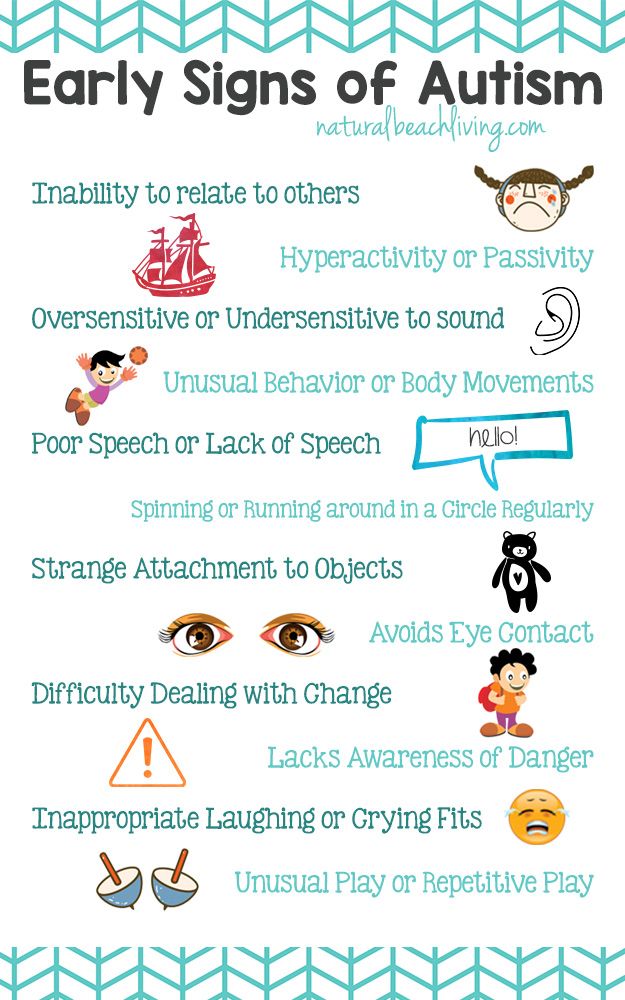 If the assessment reveals a developmental problem, you will work with early intervention treatment providers to develop an Individualized Family Service Plan (IFSP). An IFSP describes your child's needs and the specific services he or she will receive.
If the assessment reveals a developmental problem, you will work with early intervention treatment providers to develop an Individualized Family Service Plan (IFSP). An IFSP describes your child's needs and the specific services he or she will receive.
For autism, an IFSP would include a variety of behavior, physical, speech, and play therapies. It would focus on preparing autistic kids for the eventual transition to school. Early intervention services are typically conducted in the home or at a child care center.
To locate local early intervention services for your child, ask your pediatrician for a referral or use the resources listed in the “Get more help” section at the end of the article.
Special education services (age three and older)
Children over the age of three receive assistance through school-based programs. As with early intervention, special education services are tailored to your child's individual needs. Autistic children are often placed with other developmentally delayed kids in small groups where they can receive more individual attention and specialized instruction. However, depending on their abilities, they may also spend at least part of the school day in a regular classroom. The goal is to place kids in the “least restrictive environment” possible where they are still able to learn.
However, depending on their abilities, they may also spend at least part of the school day in a regular classroom. The goal is to place kids in the “least restrictive environment” possible where they are still able to learn.
If you'd like to pursue special education services, your local school system will first need to evaluate your child. Based on this assessment, an Individualized Education Plan (IEP) will be drafted. An IEP outlines the educational goals for your child for the school year. Additionally, it describes the special services or supports the school will provide your child in order to meet those goals.
Know your child's rights
As the parent of a child with ASD, you have a legal right to:
- Be involved in developing your child's IEP from start to finish
- Disagree with the school system's recommendations
- Seek an outside evaluation for your child
- Invite anyone you want—from a relative to your child's doctor—to be on the IEP team
- Request an IEP meeting at any time if you feel your child's needs are not being met
- Free or low-cost legal representation if you can't come to an agreement with the school
Caring for a child with autism when you are autistic
Research indicates that there is a genetic component to autism.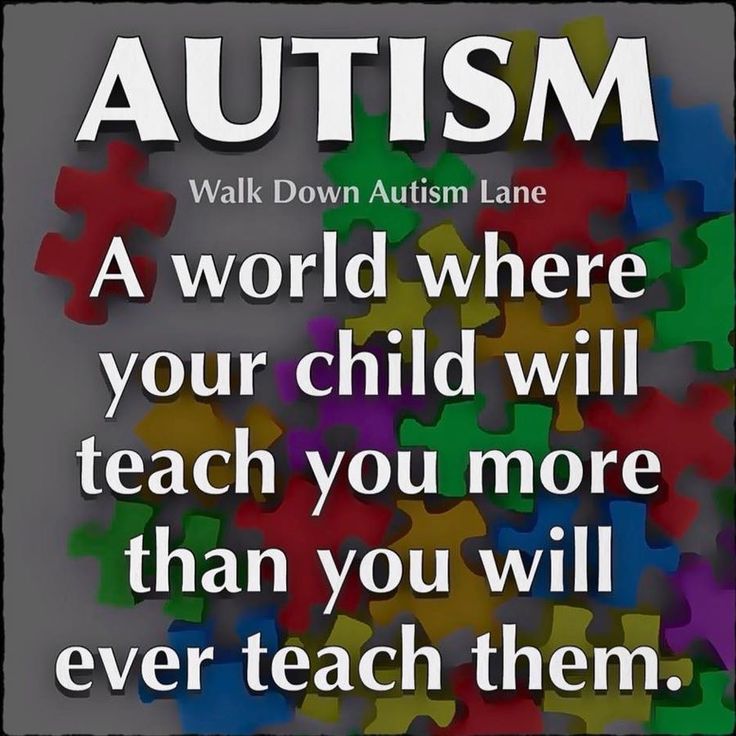 However, many parents only discover they’re autistic when they research and obtain a formal diagnosis for their own child. If you’re autistic, you might face unique challenges when it comes to raising children who are also neurodivergent. Here are a few tips that may help:
However, many parents only discover they’re autistic when they research and obtain a formal diagnosis for their own child. If you’re autistic, you might face unique challenges when it comes to raising children who are also neurodivergent. Here are a few tips that may help:
Don’t hide your identity. Let your child get to know the real you. If you have certain quirks, such as repetitive behaviors or unusual body movements, don’t feel pressured to mask them in front of your child. By being yourself, you’re encouraging your autistic child to be themselves around you and creating an opportunity to bond over your similarities. You can also talk with your child about how neurotypical individuals may react to your behaviors and how to handle negative reactions. Aim to offer the type of guidance you could’ve used when you were young.
Remember to care for yourself. Caring for a child can be challenging if you struggle with sensory needs or require a highly structured lifestyle. For example, if you’re sensitive to sounds, a crying child may be a constant source of stress and discomfort. A child’s sudden tantrums can make it hard for you to stick to a consistent schedule, creating further frustration. To protect your own sense of well-being, it’s important for you to adopt coping habits that help reduce your stress in these types of situations.
For example, if you’re sensitive to sounds, a crying child may be a constant source of stress and discomfort. A child’s sudden tantrums can make it hard for you to stick to a consistent schedule, creating further frustration. To protect your own sense of well-being, it’s important for you to adopt coping habits that help reduce your stress in these types of situations.
[Read: Autism in Adults: Recognizing the Signs, Living with a Diagnosis]
If certain tasks seem overwhelming, look to other people for support. For example, if communicating with doctors and teachers poses a challenge, a parenting mentor or other parents with autism might be able to help you come up with solutions.
Build on your strengths. Everyone has specific strengths, and you’re no exception. Consider how your skills and talents can help you establish a supportive household for your child. Do you excel at visual thinking or design? Create educational posters for your child. Are you able to focus for long periods of time? Use that focus to research and study up on parenting practices and coping strategies.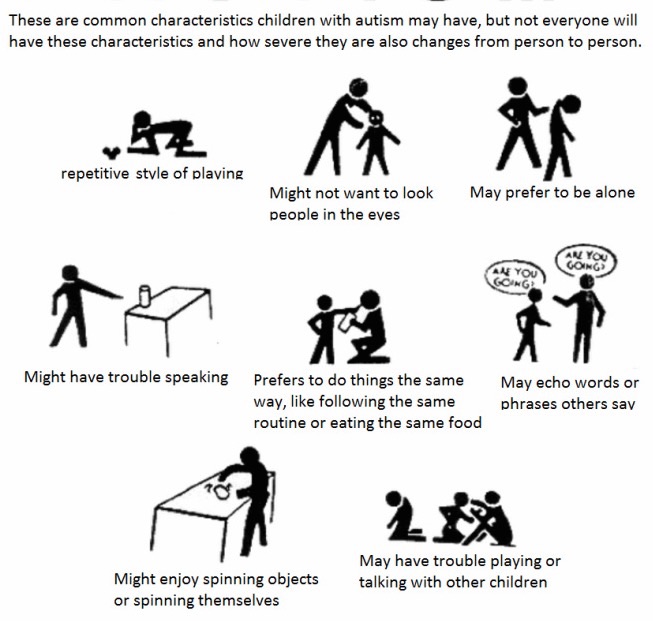 Are you good at problem-solving? Use your creativity and out-of-the-box thinking to overcome challenges around the house.
Are you good at problem-solving? Use your creativity and out-of-the-box thinking to overcome challenges around the house.
Be patient with yourself and your child. Be willing to accept that you both have plenty of time to grow and learn. You might experience some setbacks. Perhaps, you lose your temper and feel ashamed by your reaction. Or maybe your child has a hard time fitting in with peers when they start school. Resolve to learn from bad experiences and find solutions, even if you have to make multiple attempts. When one of you does make progress, remember to acknowledge the growth. Offer your child praise and celebrate your personal successes as well.
Authors: Authors: Melinda Smith, M.A., Jeanne Segal, Ph.D., and Ted Hutman, Ph.D.
Ted Hutman, Ph.D. is Assistant Clinical Professor in Psychiatry at the David Geffen School of Medicine at UCLA and a licensed clinical psychologist practicing in Santa Monica, CA.
- References
Neurodevelopmental Disorders.
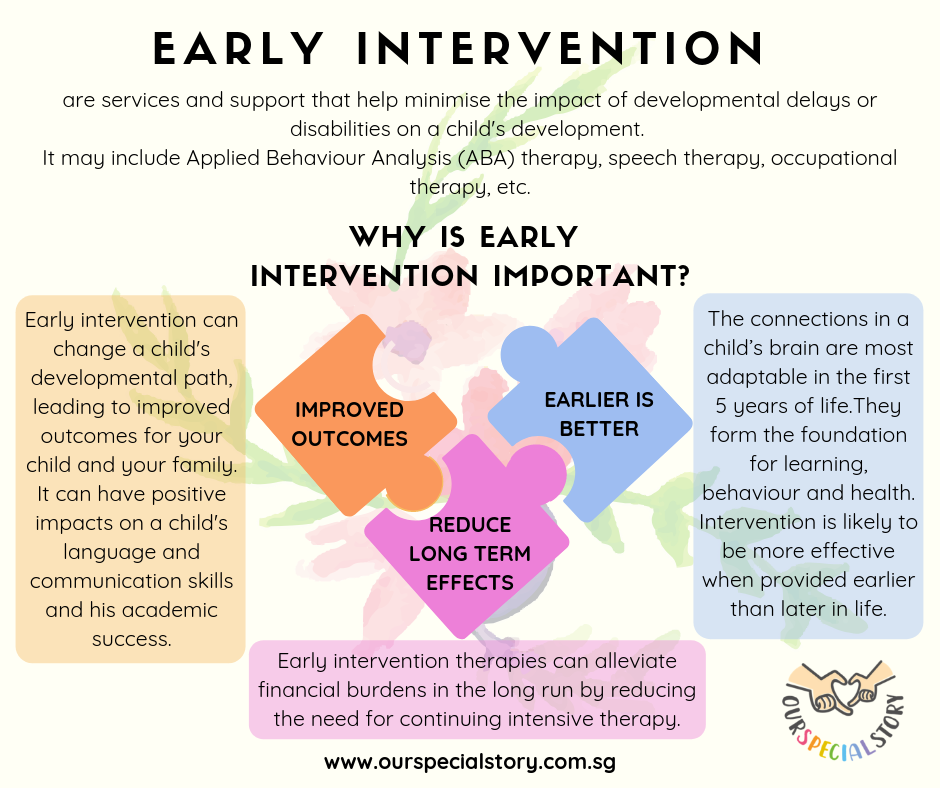 (2013). In Diagnostic and Statistical Manual of Mental Disorders. American Psychiatric Association. https://doi.org/10.1176/appi.books.9780890425787.x01_Neurodevelopmental_Disorders
(2013). In Diagnostic and Statistical Manual of Mental Disorders. American Psychiatric Association. https://doi.org/10.1176/appi.books.9780890425787.x01_Neurodevelopmental_DisordersAutism spectrum disorder: MedlinePlus Genetics. (n.d.). Retrieved June 16, 2022, from https://medlineplus.gov/genetics/condition/autism-spectrum-disorder/
Autistic children may inherit DNA mutations from their fathers | Science | AAAS. (n.d.). Retrieved June 16, 2022, from https://www.science.org/content/article/autistic-children-may-inherit-dna-mutations-their-fathers
Five Tips for Autistic Parents from This Autistic Parent – The Asperger / Autism Network (AANE). (n.d.). Retrieved June 16, 2022, from https://www.aane.org/five-tips-for-autistic-parents-from-this-autistic-parent/
Individuals with Disabilities Education Act (ACT). (n.d.). Retrieved June 16, 2022, from https://www.apa.org/advocacy/education/idea
Individuals with Disabilities Education Act (IDEA) Services | CDC.
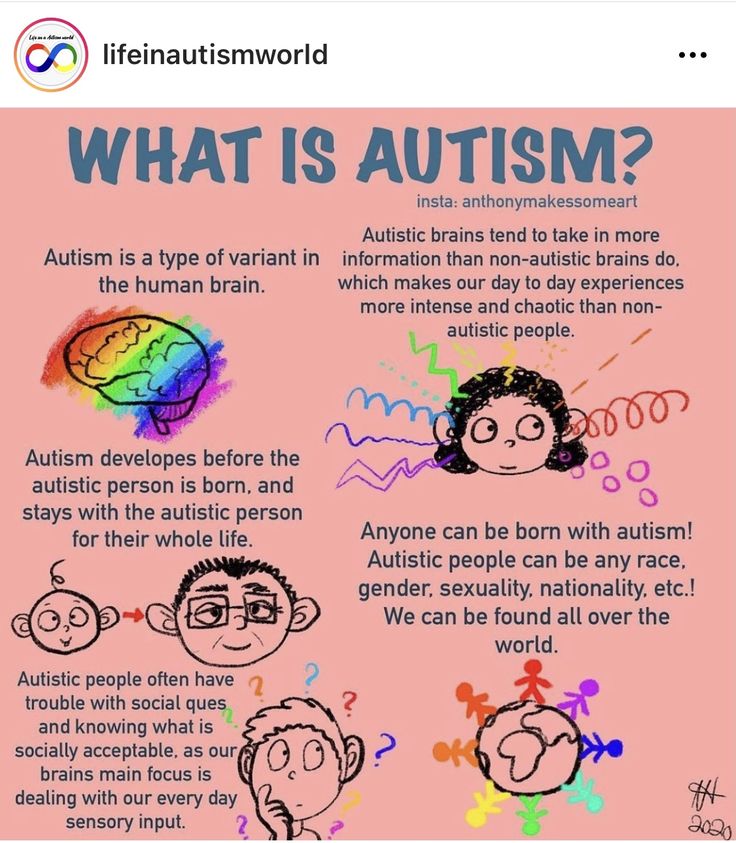 (n.d.). Retrieved June 16, 2022, from https://www.cdc.gov/ncbddd/cp/treatment.html
(n.d.). Retrieved June 16, 2022, from https://www.cdc.gov/ncbddd/cp/treatment.htmlSensory differences—A guide for all audiences. (n.d.). Retrieved June 16, 2022, from https://www.autism.org.uk/advice-and-guidance/topics/sensory-differences/sensory-differences/all-audiences
The Autism Revolution – Whole body strategies for making life all it can be (Harvard Health Books)
Living with Autism – Including how to cope with stress on the family, make the home safe, and deal with sibling issues. (Autism Society of America)
Life Journey Through Autism: A Parent's Guide to Research (PDF) – Guide to choosing treatments for your children. (Organization for Autism Research)
Parent Guide to IDEA – Guide to the Individuals with Disabilities Education Act (IDEA) in the U.S. (National Center for Learning Disabilities)
Individualized Education Plans (IEPs) – Learn all about IEPs in the U.S. for kids with autism and other developmental issues.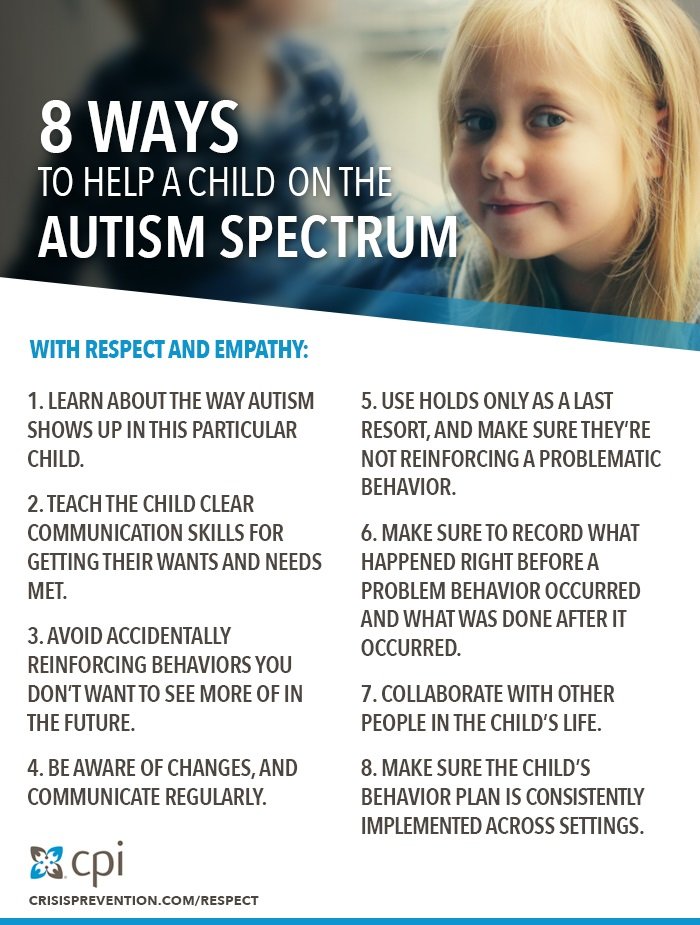 (KidsHealth)
(KidsHealth)
How is Autism Treated? – Therapies and treatments. (Autism Speaks)
Hotlines and support
In the U.S.: Call the Autism Society National Helpline at 1-800-328-8476.
UK: Call the Child Autism UK helpline at 01344 882248 or find help and support at The National Autistic Society.
Australia: Call the Early Intervention helpdesk in Perth at 1800 778 581 or Get support for your child from NDIS.
Canada: Call the Autism Canada Family Support Representative at 1-800-983-1795.
New Zealand: Find helplines and support in your area at Autism New Zealand.
Last updated: December 5, 2022
How to support the parents of a child with autism?
09/28/13
Ten ways to help a family in which a child with autism
Author: Kimberly Grosso / Kymberly Grosso
Translation: Tatyana Skripko
Source: psychology
9000
When a child is diagnosed with autism, parents are usually preoccupied with finding the right rehabilitation services, doctors, schools, and various child care professionals.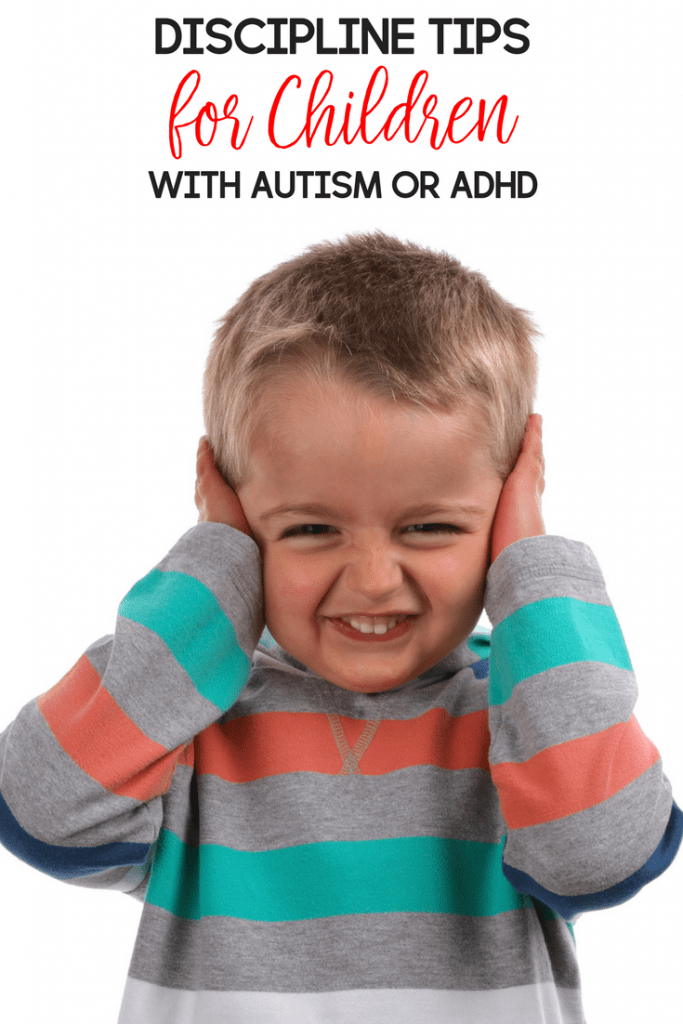 And often what we least expect at this moment happens - relationships with friends, relatives and neighbors change. Someone will provide support, help to the best of their ability and hug our child, regardless of the diagnosis. But there will also be someone who will quietly stand aside, or even stop communicating.
And often what we least expect at this moment happens - relationships with friends, relatives and neighbors change. Someone will provide support, help to the best of their ability and hug our child, regardless of the diagnosis. But there will also be someone who will quietly stand aside, or even stop communicating.
What happens when you find out that a friend, relative or neighbor's child has been diagnosed with autism? How can you help the child and his parents? There are many ways to help your loved ones, from words of encouragement to organizing games with other children. Here are ten ways to help a family raising a child with autism:
1. Just being there
Sounds simple enough, but parents of a child with autism need someone nearby to ask “how are you?” and who occasionally asks same. You are not an expert and may not know all the terms related to autism, but be prepared for parents to want to talk about their child.
It often happens that a diagnosis of autism pushes us and our children into isolation.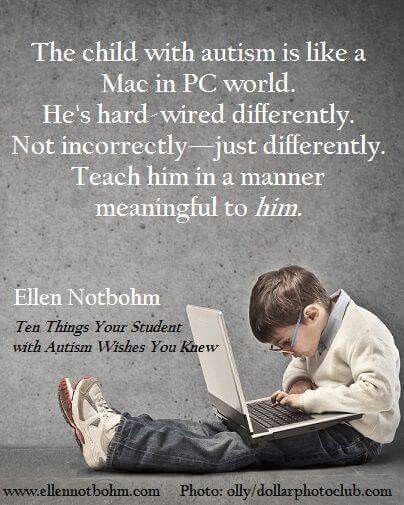 It’s not that we ourselves want to isolate ourselves, it’s just that we are often so busy treating and rehabilitating a child that we simply don’t have time for anything else. Offering to stop by for a coffee or meet up and just talk is one of the best ways to help your friend get out of the autism dome and through isolation.
It’s not that we ourselves want to isolate ourselves, it’s just that we are often so busy treating and rehabilitating a child that we simply don’t have time for anything else. Offering to stop by for a coffee or meet up and just talk is one of the best ways to help your friend get out of the autism dome and through isolation.
2. Talk about autism. How?
To speak or not to speak? That is the question. The answer to it is: "Depending on the situation." Most parents whose children have autism spectrum disorders are very fond of talking about autism. However, some parents do not want to disclose the diagnosis, talk about autism and how it manifests itself in their child. Some parents may be at the stage of denying the diagnosis and do not even want to hear this word, and discuss this topic even more so.
So what can you do as a friend? If your friend brings up the topic of autism himself, ask how the child is doing. Even if your friend does not pronounce this word with an "A", he will appreciate your sincere interest, while autism will not be mentioned.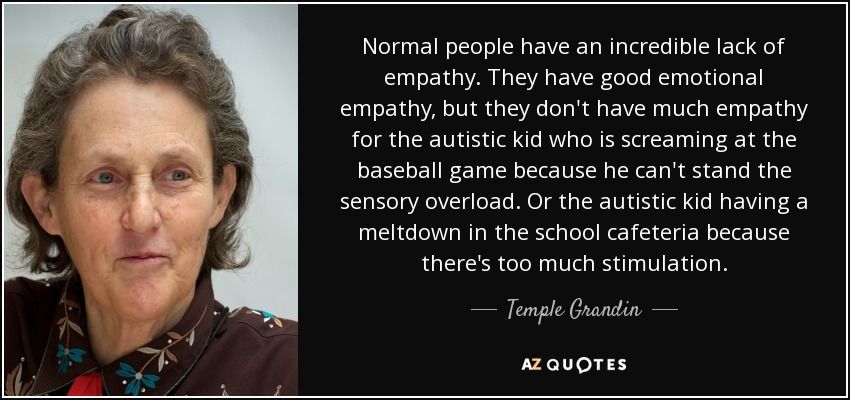 If your friend is open about the diagnosis, you should certainly show interest in both the child and the topic of autism. After all, we, the parents of children with autism, never take the development of our child for granted, and we are proud of any, even the smallest achievement. Moments of communication with friends become especially valuable for us when we understand that friends are worried about our child.
If your friend is open about the diagnosis, you should certainly show interest in both the child and the topic of autism. After all, we, the parents of children with autism, never take the development of our child for granted, and we are proud of any, even the smallest achievement. Moments of communication with friends become especially valuable for us when we understand that friends are worried about our child.
3. What does a child with autism look like?
This question seems strange. But I remember moments when someone saw my son and said things like: “You can’t tell that he has autism” or “He doesn’t show that he has autism.” Interestingly, autism does not imply any outward signs. Yes, some children may have specific behaviors or communication skills, but all children are very different. Therefore, if someone tells me that they have experience with autistic children, I understand that this does not guarantee that person's ability to understand and approach my child.
If you know, observe, or teach another child with autism, it is best not to make comparisons with the child you just met. I would also advise against commenting on what you think a child with autism should look like. Sure, it's good that you're looking to learn the signs of autism, but the best approach is to find the key to each child's personality.
It is difficult to explain how this happens and why autism manifests itself differently in each child. But when your autistic child has 10 friends with Asperger's, it becomes obvious that each of them is unique in their talents and interests.
4. Prognosis
If you asked me when Tyler was diagnosed at age 2 what would happen to him at age 12, I couldn't tell you anything...and the doctors couldn't either. I have been asked many times, “What is the prognosis? Maybe he will outgrow the autism? Will he go to college? In fact, in most cases we do not know what the prognosis is, and for us this is a very sensitive topic. After all, we do not know what will happen next. The future is the unknown, and it can be scary.
After all, we do not know what will happen next. The future is the unknown, and it can be scary.
Unlike parents of neurotypical children who make plans for college or vocational education, we often do not know what educational, social and behavioral level our children will be when they grow up. Can we plan for the future? Yes, but we take into account unknown variables. In the future, our child may go to college, continue his education, or maybe not. We are often not even sure if our child will be independent enough to live on his own. We hope for independence, but the reality of the future may be a shared home. Or our child will live with us until the end of our days.
Many of us worry about what will happen to our child if something happens to us. And this is also a difficult topic. Therefore, if your friend himself spoke about the forecast for the future, discuss it with him. But keep in mind that some parents are not ready to discuss this issue.
5. Information
Recently, stories related to autism have been appearing in the news more and more often.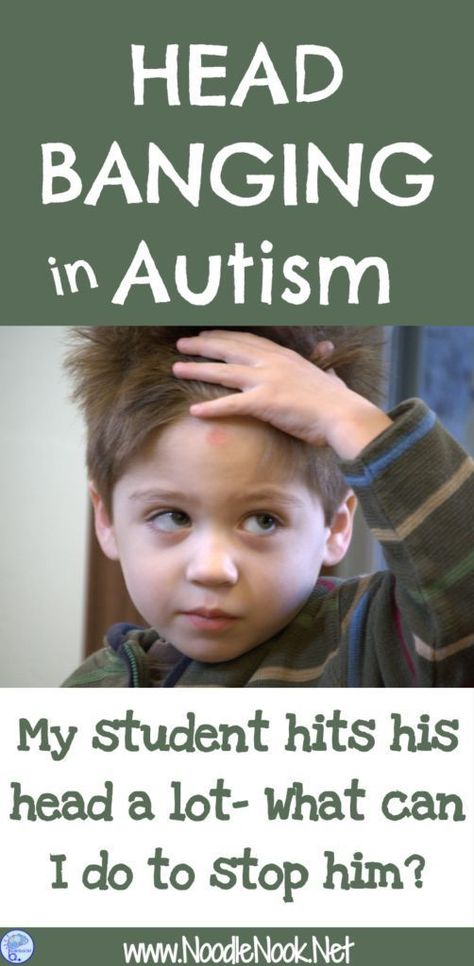 As a parent of a child with autism, I am very grateful to friends and family when they find some information about autism and send it to me. If your friend is ready to openly discuss autism, send him the information you get, and he will appreciate this show of your concern. If our child is diagnosed with autism, this does not mean that we know all the latest news from this area.
As a parent of a child with autism, I am very grateful to friends and family when they find some information about autism and send it to me. If your friend is ready to openly discuss autism, send him the information you get, and he will appreciate this show of your concern. If our child is diagnosed with autism, this does not mean that we know all the latest news from this area.
My only caveat on this issue is that parents may have different views on the treatment or causes of autism. As a result, parents sometimes overreact to articles, studies, and so on. So I advise you to be careful. If your friend is positive about the new information, don't hesitate to share it, but don't be too pushy.
6. Playing with friends
I remember when my son was diagnosed with autism, my friends had kids the same age as Tyler. It was important for my son to be in the company of neurotypical children. However, some friends acted like autism was contagious and didn't want their kids to play with my son. I remember the husband of a good friend of mine expressed dissatisfaction with my son and his autism. After that, I never invited them with the children, because I felt that my friend's husband did not want my son to play with them. I was faced with a harsh reality - while some people accept our children, others clearly do not.
What can you do? If you have a friend who is raising a child with autism, invite her and the children over so the children can play together. Will it be a regular meeting where children play together? Maybe yes, maybe not. It depends on the children themselves. Even if normal cooperative play does not occur, such an encounter will provide an opportunity for a child with autism to learn social behaviors and skills from other children. For some neurotypical children, such an encounter can be a lesson in acceptance and tolerance for people who are different from others. The easiest way to learn acceptance is through practice. So for a neurotypical child, there is a benefit in this. For both families, this can be a good experience.
7. Playing with neighborhood kids
When it comes to autism, being a good neighbor means more than keeping the yard clean or borrowing a cup of sugar. If you and your neighbors have children of the same age, invite them over so that the children can play together. It is better to invite the child along with the parent to find out how autism is expressed in this particular child, and how you can help to establish a joint game of children.
It is important to note that many children with autism are unable to make and maintain friendships, carry on conversations and engage in group activities. This means that you will most likely need your help to build friendships and communication between your child and a child with autism. In addition, many of our children function better in a structured environment. If you organize the meeting well, develop a specific plan of action, this will help both children have a good time.
8. Opportunity to rest
Regardless of the age of a child with autism, it is difficult for parents to find an opportunity to rest. Many parents of children with disabilities are completely absorbed in their daily responsibilities. Some children with autism spectrum disorders do not sleep well at night, which further drains the strength of the parents.
However, when you have a child with special needs, it can be difficult to find someone you can trust to take care of him. For example, I easily found a teenage girl in the neighborhood who looked after my 4-year-old neurotypical daughter. But when my son with autism was at this age, it was absolutely impossible to leave him under the care of an unprepared young girl. At that time, my son spoke only a few words and had many behavioral characteristics, so I could only entrust him to my parents or another adult.
What does this mean if you are a friend or relative? The offer of a short respite while a trusted friend or relative who knows how to properly interact with the child will sit with the child will be greeted with enthusiasm. Whether it be one hour or one evening, any offer will be an invaluable gift for your friend. It seems to be a simple courtesy, but for exhausted parents, a few hours to go shopping or just spend time together is a luxury.
9. Do not judge
A disapproving look in a store, a remark from a relative that “it is necessary to raise a child better” - most parents of children with autism become an object of condemnation in one way or another. Just imagine: we live like in an aquarium - countless speech therapists and therapists at home, endless visits to doctors. Therefore, often the "advice" of people who do not have a child with autism can make us lose patience. Even if you are confident in the constructiveness of your criticism, keep in mind that such statements can easily destroy your relationship with a friend.
Until you're in our shoes, you'll never understand what it's like to raise a child with autism. Most people instinctively know not to judge, but it still happens. And once that happens, the damage can be irreparable.
10. Privacy
Some parents, like me, are open about their child's diagnosis. Others do not want to discuss it with anyone, except perhaps close friends and relatives. And at the opposite end of the acceptance scale are parents who may deny the diagnosis and won't discuss it with anyone.
But whether or not we talk about our children and autism, we expect confidentiality to be respected. Being frank with friends and relatives does not mean that we want them to tell others about our children and our other activities. Confidentiality is especially important for parents who choose not to disclose their child's diagnosis. It would seem that common sense suggests that you should not gossip about other people's children, but it is not superfluous to recall that if we tell you about something, please do not tell anyone about it without our permission.
Conclusions
You will probably meet many people with autism and families who have this problem in your lifetime. If your choice is to become part of the solution by giving support to a friend, relative, or neighbor, then try to study a specific child, not the issue of autism in general. Make the choice to accept children with disabilities and tell your children that they can help a child with autism by being a friend.
After my son was diagnosed with autism, I realized that friendships can be very fragile. It's easy to be a friend when things are going well. And only in difficult times can we understand who our true friend is. I am infinitely grateful to those of my friends and relatives who supported our family after we learned about the diagnosis of our son. They made a decision that they would accept my son for who he is and help us in any way possible. When you make the decision to support a family that is struggling with autism, you bring the greatest gift. And perhaps your kindness and nobility will become an invaluable reward for yourself.
“A friend's hardest task is to be understanding when you don't understand. ” — Robert Brault
Thanks to Tatyana Skripko for the translation.
Parenting children with autism
Tantrums in autism: what is the cause and what to do?
6/23/20
Parent's guide on how to distinguish simple "scandals" from a nervous breakdown in autism, and what can be done in each case
Source: Autism Parenting Magazine
All parents experience embarrassment, irritation, and fatigue when their child throws a tantrum. It doesn't matter if a child has a diagnosis or what stage of development he is at, both experienced parents and newcomers are faced with violent emotional outbursts in a child. It's inevitable - if you have a child, you'll deal with behavioral outbursts one way or another.
If your child is on the autism spectrum, then you have an additional unique parenting skill - the ability to cope with nervous breakdowns. You cannot always predict what will cause a violent scandal or emotional outburst on any given day or in any given environment. To do this, you will have to be superparents with an infinite set of tools and limitless flexibility and sixth sense.
Neither behavioral scandals nor nervous breakdowns look attractive, but in many families of children with autism they happen very often and can be a source of serious stress. It is very important to understand the difference between these two phenomena. Although both may look like a "hysteria," a scandal and a nervous breakdown are not the same thing, and they require completely different approaches.
What is a "scandal"?
Scandal or behavioral outburst usually occurs when the child is denied what he wants or cannot do what he wants to do.
Parents often face constant scandals at the age of 2 or 3, or during the so-called "crisis of three years", when young children begin to assert their independence. In fact, the “crisis of three years” is a developmental stage that usually takes place between the ages of 1 and 4 years, because the child needs time to develop the necessary motor, speech and thinking skills.
Preschool children are often prone to "throw up scandals" because they lack the skills in the areas needed to cope with a difficult situation on their own. Why is this happening? There are several reasons for this:
- They have a desire to be independent, but lack the motor and cognitive skills (the ability to plan, coordinate, and execute) to actually BECOME independent.
- In addition, their speech skills are just beginning to develop, so it is difficult for a child to express what he wants and what he needs, and such difficulties can drive him crazy.
- The child's prefrontal cortex is still underdeveloped. This is the part of the brain that is responsible for emotional regulation and social behavior. The child literally has no ability to regulate his behavior!
- As the child begins to understand the world around him more and more, this very world can cause him anxiety. Such anxiety, coupled with insufficient control over the environment, often leads to behavioral outbursts - it is simply difficult for a child to cope with everything that is happening around.
A key feature of such scandals is that this behavior persists and intensifies if you somehow pay attention to the child during the explosion. If you start consistently ignoring the child when he "scandals", the outbursts will subside.
When a child “scandals”, he retains the ability to control his behavior, this behavior may increase or decrease depending on the behavior of adults around him. The scandal stops when the child gets what he wants, or when he realizes that the outbreak will not lead to the desired result.
If parents "give in" during outbreaks from time to time, children will start arguing again and again, since this behavior has proven effective if they are denied what they want.
As children mature, they develop self-regulation skills to deal with anxiety and anger. If the "tantrum"-like behavioral outbursts are not appropriate for the child's developmental stage, it can lead to great social and emotional difficulties due to inappropriate behavior.
What is a "nervous breakdown"?
A nervous breakdown occurs when the child loses control of his behavior and can only calm down when he reaches the stage of exhaustion.
A nervous breakdown is a reaction to overload, for example, very often it is a consequence of excessive sensory stimulation. Scandals can lead to nervous breakdowns, so it's often difficult to distinguish between these two behavioral outbursts if you don't understand the child's sensory responses well.
When a person with autism experiences too much stimulation from the environment, it can lead to an overload of the central nervous system, which loses the ability to process incoming information. This is actually a physiological "traffic jam" in the central nervous system, and behavior in response to sensory overload is the problematic behavior of a driver who is stuck in traffic. Imagine that you are calmly driving to your destination, humming your favorite song, and then suddenly the highway is completely up. Now you can’t continue on your way, your expectations of the situation have not been met at all, you are surrounded by huge trucks, you are inhaling exhaust fumes, you are deafened by car horns, and your car windows are in direct sunlight. Anxiety about the situation itself is heightened by all these sensations, and you start sensory overload. The last thing you want is to stay in this traffic jam, but you have no way out. Irritation and overexertion are normal reactions in such a situation. Maybe you turn off the radio, close your eyes, try to take deep breaths to calm down (a socially acceptable desirable behavior). OR you jump out of the car and yell in a fit of rage (unwanted maladaptive behavior).
During times of increased anxiety and stress, the sympathetic part of our autonomic nervous system starts producing the hormone cortisol and triggers the fight or flight response. When people with autism or sensory processing dysfunction experience sensory overload, they are unable to regulate sensory signals from the environment, and their bodies begin to perceive these signals as a huge threat.
In moments of a nervous breakdown, control over behavioral reactions is lost. And it is very important to remember this - you cannot expect logical and rational answers in a situation where the child's body perceives ordinary sensory signals as an attack.
Because of this difference in control over one's behavior, strategies for a scandal and a nervous breakdown must be very different.
How can scandals be dealt with?
Strategies for dealing with scandals come down to positive behavioral support and the development of alternative behaviors. There are now many books and articles adapted for parents on how to deal with unwanted child behavior. Most of these approaches boil down to three main strategies:
1. Definition of motivation, that is, the purpose of behavior.
It is important to understand that when a child "scandals" this behavior has a specific purpose. Typically, a behavioral scandal serves a child in one of the following ways: to get the attention of other people (for example, parents), to get some objects or activities (that the child wants, but was denied or access to them is delayed), or to avoid something. - something he doesn't like.
Once you understand WHY the child is fighting, you will be able to understand how you can react to it. Recognize the needs of the child, but do not give in to him in response to the scandal.
2. Encouragement of positive behaviour.
Start "catching" the child when he behaves well. For example, when he does NOT make a fuss in response to small problems, praise him and reward him for good behavior. Depending on what your child prefers, it could be a hug, a high-five, or a good job. This is how you teach your child that he can get your attention not only through "bad" behavior, but also through "good" behavior. Focusing on what the child did right will help the child build on those successes and behave more positively in the future!
3. Develop skills for success.
We know that a child's frequent fights can indicate a lack of patience, a lack of a way to communicate one's desires, a lack of knowledge of what behavior is expected in a given situation, an inability to comfort oneself. It is important to look for opportunities to develop these skills in your child and help them be successful. However, it is important to work on these skills every day and NOT when the child is fighting.
Strategies for nervous breakdowns in children with autism
You've probably heard the expression, "If you know one person with autism, then you know one person with autism." Each child with autism responds differently to different situations, has different skill levels, and different sensory, communication and social profiles, so there is no single strategy that will help with any child's breakdown. Below are a few tips and strategies that have helped other parents, but you need to consider how they fit the individual child:
1. Visual schedules for the day, social stories, to-do lists, schedules for a specific event or task
We all would like to completely avoid nervous breakdowns, but this is impossible. Instead, strategies that reduce stress and anxiety in everyday life, and therefore reduce the risk of a nervous breakdown, can be very helpful. Visual timetables, social stories, checklists, and other visual support help your child become aware of what is expected of him and what is expected of him. For example, if you are planning a trip to the store, then search the Internet for photos of this particular store, place them in the child’s visual schedule for the day. Or, if you have the opportunity, go to the store without your child and film your trip to the store, then watch the video with your child at home. Or write a social story with illustrations about going to the store, what it is for, and what will happen from the beginning to the end of such an event, and read the story with your child. Such strategies create predictability and a sense of control for the child, which reduces anxiety. Over time, also teach your child “surprises” in the schedule so that he can cope with unexpected events in the usual daily routine.
2. Regular "sensory unloading" in the child's schedule.
Regular sensory unloading, the so-called "sensory diet", is an important component that helps the child to regulate his condition during the day. Some parents have found it helpful to prevent breakdowns by scheduling regular “quiet times” for their children, rather than waiting for the events of the day to overwhelm them. This is important to take into account, especially if you are planning visits to new and noisy places for the child. Since a nervous breakdown is the result of many different environmental stimuli whose effect "accumulates", it is best to schedule some quiet time with relaxing sensory activities before going out in public with your child.
3. Knowing the signs of severe stress in a child.
Another important strategy is to be aware of the first signs that a child is under severe stress. Does the child press his hands to his ears? Runs out of the room? Repeats "Go away!" or "Let's go home!", or do you notice a sharp increase in repetitive behavior (for example, the child sways, hums under his breath, shakes his arms)? These signs of extreme stress may indicate that the child is being over stimulated and needs your help to regulate before they develop into a full-blown breakdown.
If the child is unable to speak, or their language skills become unreliable or lost during a nervous breakdown, they will need some form of non-technological alternative communication, such as a “choice board” where the child points to one of the images from a few to explain what he wants. The child may use alternative communication to let you know when he needs to leave the situation or use a different strategy to bounce back.
Some children need a predetermined sign that both of you understand (hand gesture, signal word) to communicate sensory overload and thus ask for help.
4. Finding a quiet and safe space.
If you have a nervous breakdown, it is important to find a quiet and safe place. This may mean that you need to leave a place that causes overstimulation (for example, a store). The safe space may also include techniques that reduce sensory information. Remain calm, keep speech to a minimum and, if possible, be silent, offer the child deep pressure, such as hugs, to calm down. If the child is likely to run away or his behavior could become dangerous to himself or others, he may need to be restrained for safety.
Outsiders in public places may not understand the situation and their behavior may exacerbate the crisis. It is helpful to make special cards in case of a nervous breakdown - these are cards made by parents that explain the diagnosis of the child and the reasons for his cries, why he is held, or other behavior that may alert other people. When you're focusing on a child's breakdown, a ready-made card that can be held out silently can save you from unnecessary explanations or false accusations of abuse.
5. Remember to breathe.
This is not so much a strategy for the child as it is for you. Breathe, try not to take what is happening with the child at your own expense. As difficult as it may be, try to notice your emotional reactions (anger, embarrassment, sadness). Remind yourself that your child has lost the ability to control his reactions at the moment. By staying calm and in control of yourself, you are already doing a lot to help your child get through this difficult moment.
6. Portable sensory set for the prevention of nervous breakdowns.
Here are some examples of what parents carry outside the home to prevent a nervous breakdown or to help their child calm down after one.
- Sunglasses (if you are sensitive to bright light).
- Earmuffs (to reduce noise or to distract the child with music).
- Wide-brimmed hat or cap (as a way to distance yourself from social interaction and block out the light from above).
- Snack that can be crunched or chewed for a long time (stimulation of the muscles in the mouth can have a calming effect, and hungry children become more irritable).
- Unscented wet wipes (to help with tactile sensitivity if the child accidentally touches something that irritates him).
- Hand lotion with a favorite scent (may help reduce environmental odors as well as provide a soothing effect).
- A "sensory" toy is a toy that can be used to make repetitive, simple movements that can have a calming effect.
- Communication board with pictures or printed words, eg "I need a break", "Let's go", "Too loud".
- Explanation cards or other way to let strangers know what's going on and why you're reacting the way you do.
The main thing to remember is that nervous breakdowns due to overload are important to distinguish from scandals when a child tries to get his way, since they require different approaches. Both phenomena are extremely unpleasant for all involved, so it is important to put as much effort as possible into actively teaching the child how he can regulate his emotional state. Try to find strategies that work best for your child. Just remember to breathe and stay calm.
See also:
Autistic Meltdown or Temper Tantrum? by Judy Endow, MSW.” Ollibean. N.p., 10 Nov. 2016. Web. 25 May 2017.
“26 Sensory Integration Tools for Meltdown Management – Friendship Circle – Special Needs Blog.




